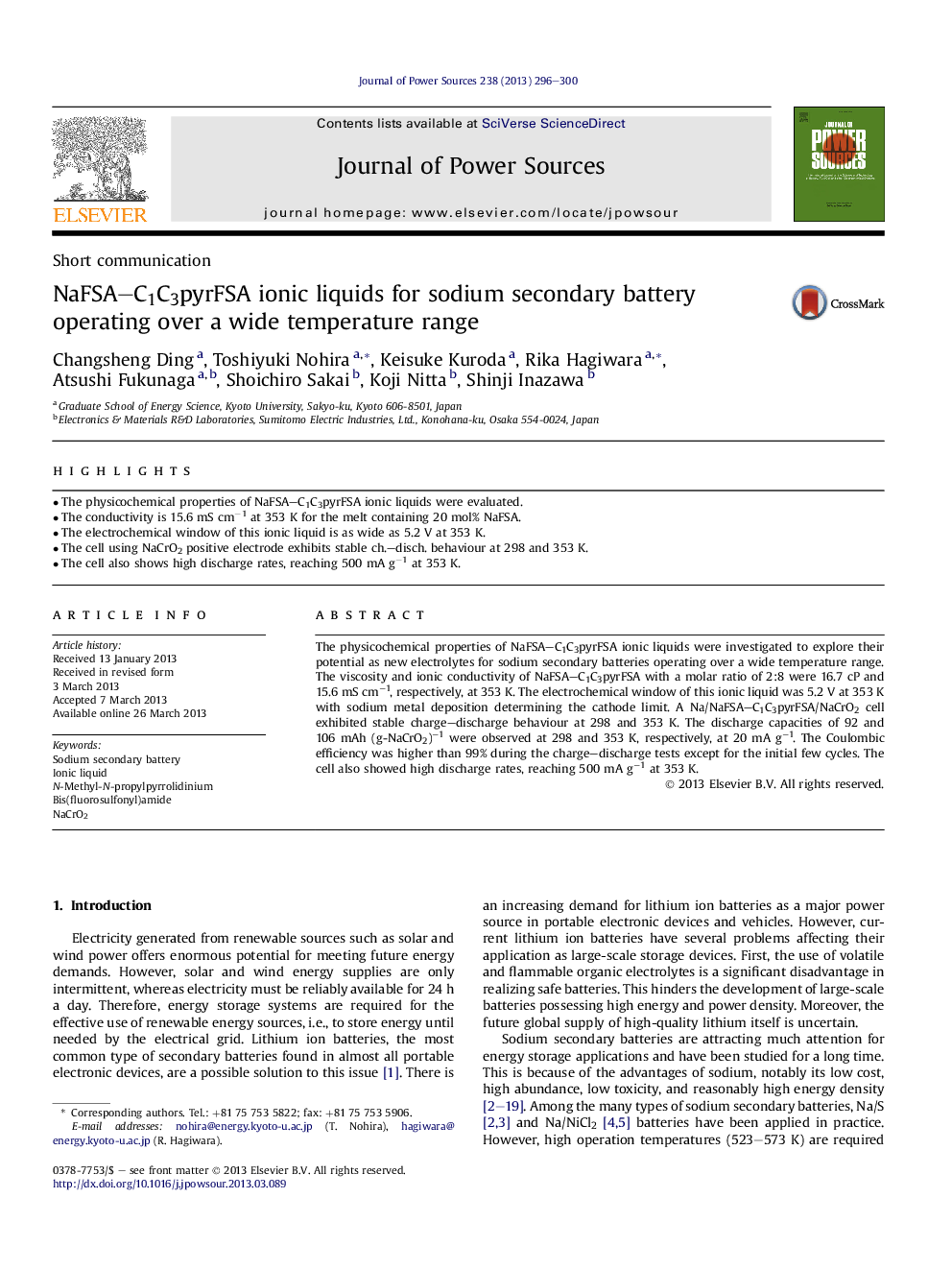| Article ID | Journal | Published Year | Pages | File Type |
|---|---|---|---|---|
| 1284398 | Journal of Power Sources | 2013 | 5 Pages |
•The physicochemical properties of NaFSA–C1C3pyrFSA ionic liquids were evaluated.•The conductivity is 15.6 mS cm−1 at 353 K for the melt containing 20 mol% NaFSA.•The electrochemical window of this ionic liquid is as wide as 5.2 V at 353 K.•The cell using NaCrO2 positive electrode exhibits stable ch.–disch. behaviour at 298 and 353 K.•The cell also shows high discharge rates, reaching 500 mA g−1 at 353 K.
The physicochemical properties of NaFSA–C1C3pyrFSA ionic liquids were investigated to explore their potential as new electrolytes for sodium secondary batteries operating over a wide temperature range. The viscosity and ionic conductivity of NaFSA–C1C3pyrFSA with a molar ratio of 2:8 were 16.7 cP and 15.6 mS cm−1, respectively, at 353 K. The electrochemical window of this ionic liquid was 5.2 V at 353 K with sodium metal deposition determining the cathode limit. A Na/NaFSA–C1C3pyrFSA/NaCrO2 cell exhibited stable charge–discharge behaviour at 298 and 353 K. The discharge capacities of 92 and 106 mAh (g-NaCrO2)−1 were observed at 298 and 353 K, respectively, at 20 mA g−1. The Coulombic efficiency was higher than 99% during the charge–discharge tests except for the initial few cycles. The cell also showed high discharge rates, reaching 500 mA g−1 at 353 K.
